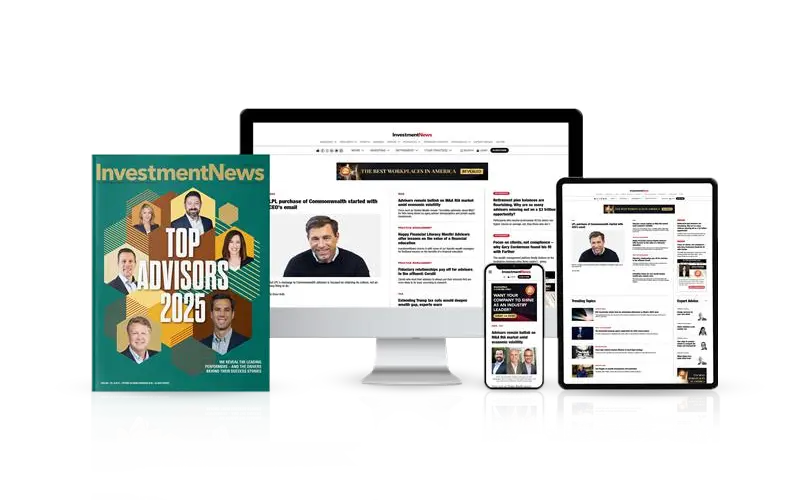

With so much uncertainty at every turn, we asked top advisers how they are helping investors rebuild their portfolios. We learned they’re laying a solid foundation based on the elements under their control: the management of risk and taxes. Matching tax-smart asset location and the appropriate risks are the fundamental rebuilding blocks to smart-household management, better long-term outcomes, and more settled and successful clients.
As investment costs continue to spiral down, the only way to improve investor outcomes and quantify the enhanced value an adviser brings is by managing risk and reducing taxes for the full household portfolio.
When we talk about smart householding, we mean the management of a portfolio of investments and protection products that:
Broadly speaking, we’ve observed five crucial steps to organize client portfolios with smart householding in mind.
Account aggregation is a cornerstone to providing comprehensive guidance to investors. But if you only look at the data without taking optimal actions, what’s the point? With a smart-household approach, advisers consider and implement all holdings as part of a risk-smart, tax-smart management strategy. That includes quantifying the benefit to the investor.
An audit starts with an analysis of the investor’s risk tolerance and the misalignment recent markets have caused. Once you know where the client’s assets have scattered, you can clarify their objectives and chart a path to better outcomes. Taxes are the single largest cost to an investor, so it’s vitally important to locate assets optimally to improve results.
Tax-smart asset location is achieved by placing tax-efficient assets in taxable accounts, while moving tax-inefficient assets into tax-qualified accounts. Always start by maintaining the target risk and asset allocation, and then locate assets in the accounts that cause the least amount of tax drag. As the saying goes, “it’s not what you make, it’s what you keep.” Risk-smart, tax-smart asset location helps you keep more, a lot more, and produces improved after-tax outcomes for both advisers and investors.
Organizing your client’s assets for tax efficiency is only half the battle. Now you have to explain the value of smart householding to the client in a way that spotlights its value. This is where the emerging trend of scoring systems truly shines.
Riskalyze and BlackRock’s Aladdin are two of the leading risk assessment tools employing this method. At LifeYield, we created the Taxficient Score® to assess tax efficiency, similar to a FICO score. Showing the enhanced value of a client’s portfolio in concrete terms, over 10, 15 and 20 years validates your work and shows clients that they’re headed in the right direction and regaining lost ground. You can demonstrate the benefits of reducing taxes and meeting their risk target as more assets grow and compound because fewer assets are leaving to pay taxes. Top advisers report this approach results in higher retention and increased referrals and revenues.
Don’t be stingy with your advice and significant point of differentiation. Show this to all your clients. And ask if they know of people who would benefit from learning their risk or tax efficiency score, and how to improve it.
In a volatility-wracked year, our charge is to rebuild the futures of our clients from the ground up. Smart householding lets us offer clients something truly precious right now: a sense of control over financial outcomes and their future.
Jack Sharry is co-chair of The Future of Financial Advice initiative at InvestmentNews, co-chair of MMI's digitally enhanced advice community and executive vice president of LifeYield.

Rajesh Markan earlier this year pleaded guilty to one count of criminal fraud related to his sale of fake investments to 10 clients totaling $2.9 million.

From building trust to steering through emotions and responding to client challenges, new advisors need human skills to shape the future of the advice industry.

"The outcome is correct, but it's disappointing that FINRA had ample opportunity to investigate the merits of clients' allegations in these claims, including the testimony in the three investor arbitrations with hearings," Jeff Erez, a plaintiff's attorney representing a large portion of the Stifel clients, said.

Chair also praised the passage of stablecoin legislation this week.

Maridea Wealth Management's deal in Chicago, Illinois is its first after securing a strategic investment in April.
Orion's Tom Wilson on delivering coordinated, high-touch service in a world where returns alone no longer set you apart.
Barely a decade old, registered index-linked annuities have quickly surged in popularity, thanks to their unique blend of protection and growth potential—an appealing option for investors looking to chart a steadier course through today's choppy market waters, says Myles Lambert, Brighthouse Financial.
